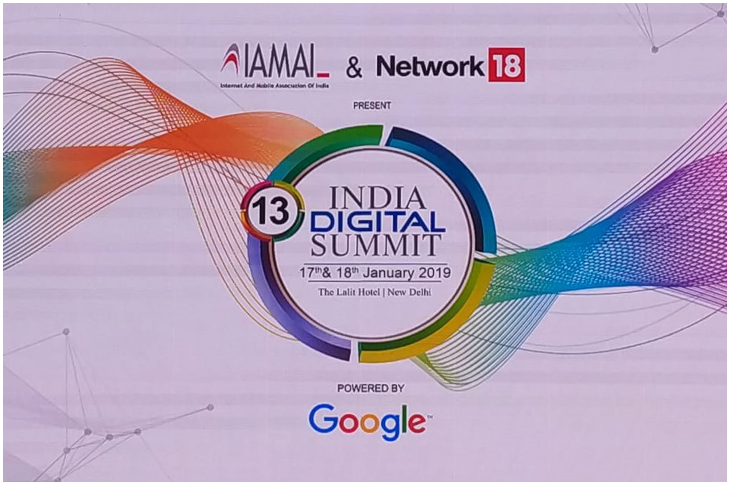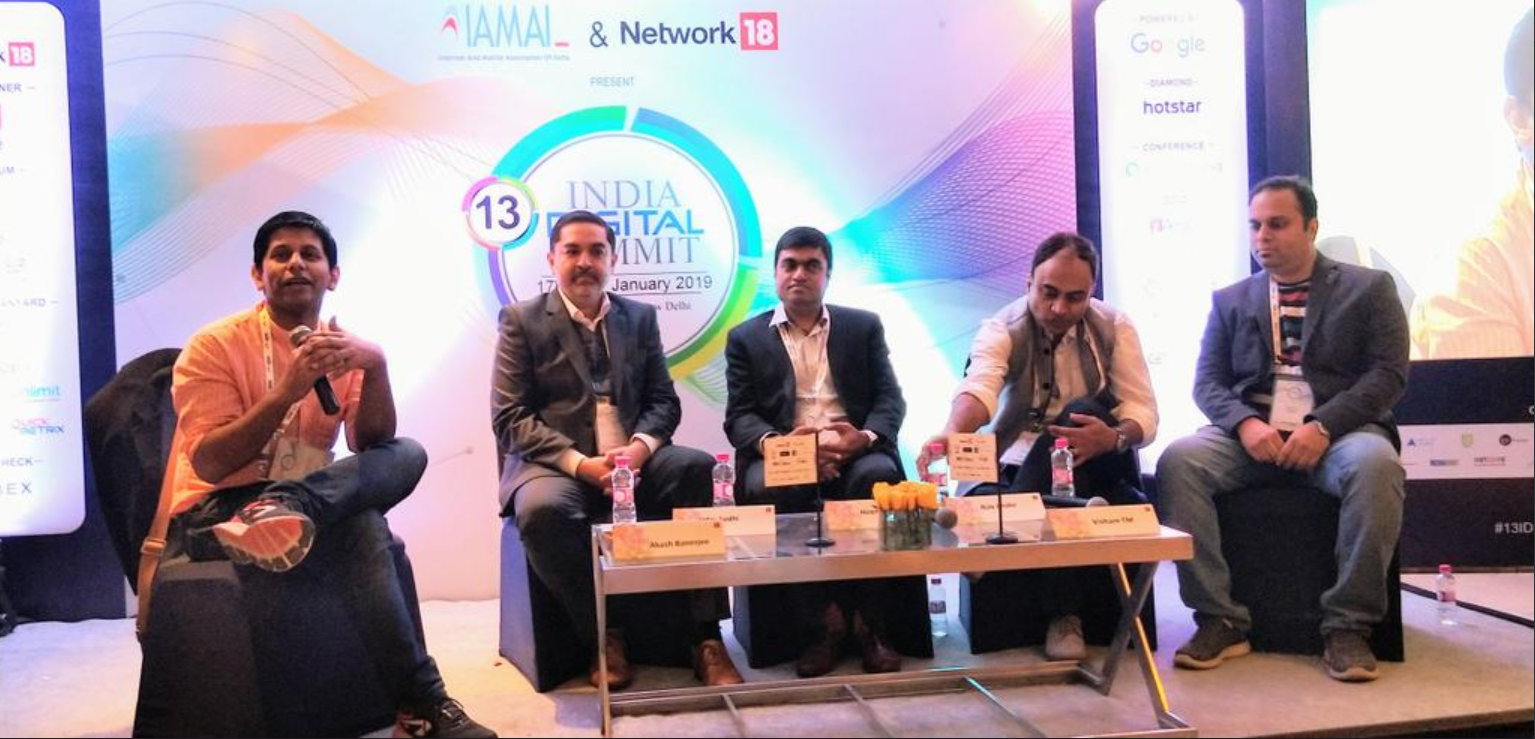IAMAI India Digital Summit – Session on viral content

Scatter is covering the 13th edition of IAMAI’s India Digital Summit held at the LaLit. This is the third of the reports that will be flowing in. Watch this space for more.
13th India Digital Summit
17th January; Day 1
Hall 3: News & Media
Session 4: Going Viral: Emerging Trends
We live in a puzzling age where the blowing up of a cat video has become as plausible as a well-crafted long-form piece going viral. And an age such as this deserves to be picked apart and understood.
It is this diversely different reception of content that this session aimed to discuss. So who better to chair it than the founder of boutique SM consultancy and YouTube personality, Akash Banerjee?
No session that breaks down content would be complete without some of its biggest producers. And so, the panel comprised Uday Sodhi, Business Head of Digital Business, Sony Pictures; Hiren Gada, CEO of Shemaroo Entertainment; Ajay Chacko, co-founder and CEO of Arré; and Vishal TM, director and CEO of Videogyaan studios.

(source)
As highlighted by Akash, the agenda of the session was to answer the following three questions:
- What is virality?
- Does it stand as a mark of good content?
- How is the content landscape changing?
In response to the first, Uday explained that virality is something that works more in the marketing space than the content space. Moreover, content that goes viral is characterised by topicality and establishes an emotional connect with the consumer.
However, based on Uday’s observations, content is increasingly transitioning into a long-form, serialised format in contrast to its short and snackable manifestation. But that’s not to say that a market for the latter no longer exists.
Since nothing fleshes out a concept like an example, Akash asked if something like Sacred Games could be considered viral content. Uday clarified that while it was certainly buzzy content, it wouldn’t have made it without offering the kind of quality it did.
Agreeing with Uday, Hiren added to the understanding of viral content: a formula for virality can rarely ever be engineered. And that at the end of the day, it is strong storytelling that sustains a company.
Shifting the focus to a more case-specific question, Akash asked Ajay if virality had mattered to them when starting out, or if the creation of core content had always been the driving factor.
Ajay remarked that they never bothered to understand a world driven by quantity. He highlighted that ‘virality’ is a term that has originated in the UGC era. And that in the OTT era, the returning user is what contributes pivotal value.
Because, as he said, “Unless you have a user spending time with you, you can’t find a significant way to monetise”. A measure of performance more significant ever since the data prices crashed and people began watching exactly what they desire.
Which is why Ajay asserted that the term ‘virality’ will slowly slip out of even the marketer’s lexicon. He also addressed a query relating to the audience size they serve: while they aren’t looking at the number-driven UGC consumer base, the market for higher quality content isn’t small either.
Adding another dimension to Ajay’s point about the returning user, Uday opined that for his company, time spent by users hits an average of 40-45 minutes daily. So, in addition to the returning user, the amount of time being spent should also be taken into consideration.
Conversation about the evolving nature of content also led Ajay to highlight that digital has given his company the opportunity to target those people in the family whose interests got side-lined because of a single family TV set. He considers this a desirable change since a sharply focused approach is the future of content.
Akash next addressed Vishal regarding the dynamics of the industry sector that creates content for kids. In response, Vishal highlighted the following characteristics of his company’s area of content creation:
- Content for kids is expensive to create since formats like animation need to compete with international standards.
- Content for kids should ideally take a global approach since financial returns from purely India-focused content aren’t significant.
- Ensuring safe viewing for kids comes much before striving for virality or profit. For instance, the depiction of objects like knives is avoided.
The talk about content approach and its monetisation also led the others to share their experiences and opinions about the same.
Uday explained that the age of ‘cheap and cheerful’ content is over. That monetisation is becoming tougher, brands are getting more demanding, and advertisers are turning more desirous. And that content needs to be invested in over the long term and built through persistent efforts.
Therefore, one can’t get away with lower quality content anymore. Companies like Uday’s need to now also consider things like data targeting and persona-catered content. And finally, the bar relating to content and production capabilities needs to be raised.
With regard to the changing content approach, Ajay highlighted the danger of adopting a ‘rear-view mirror’ outlook while trying to effectively progress towards the future. Formulas of the past were best shed with the past.
He added that to address the need of India today, content can’t take a global approach. In fact, tackling just the Indian audience requires a multi-dimensional analysis. For instance, the absence of a regional lens has affected the creation of localised content. The same also demands answering the pertinent question of monetisation of regional content.
Uday, however, insisted that a burst of regional content will soon be witnessed and that the investment for the same will also follow.
An audience query during the Q&A round brought out an interesting industry dimension: content can’t be created for messaging applications like WhatsApp since it is circulated for free and kills the possibility of monetisation. In fact, the distribution of content on platforms like WhatsApp works as an opposing force to subscription-based dissemination.
As the points were summarised and the discussions came close to being conclusively capped, it was agreed that today’s patterns of content consumption are dynamically evolving, and that to adapt and perform is where the challenge lies.
Did you happen to catch the session on MAdTech? If not, click here to get all the meaty bits.
